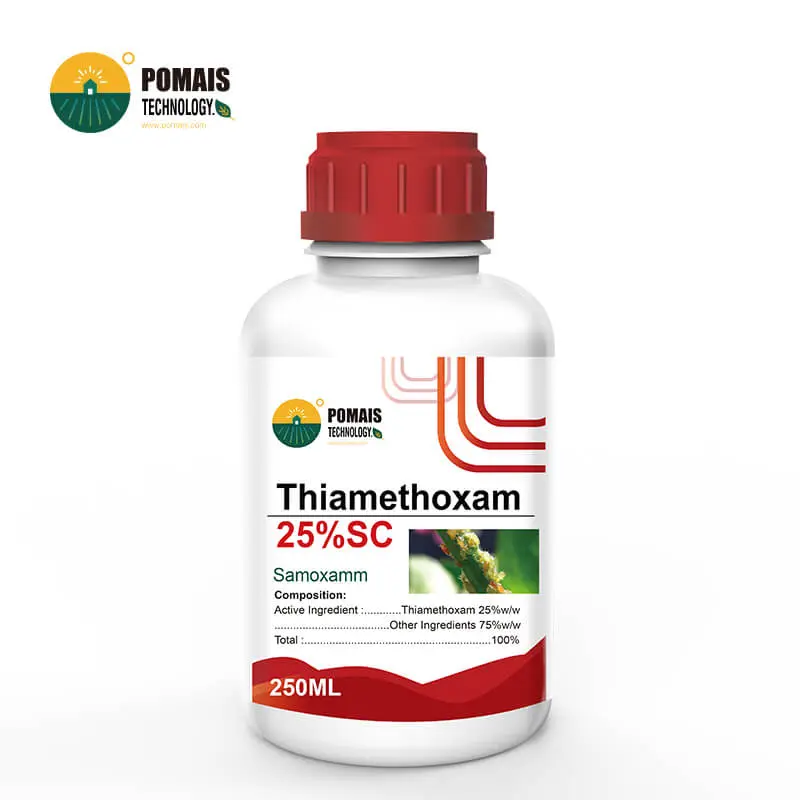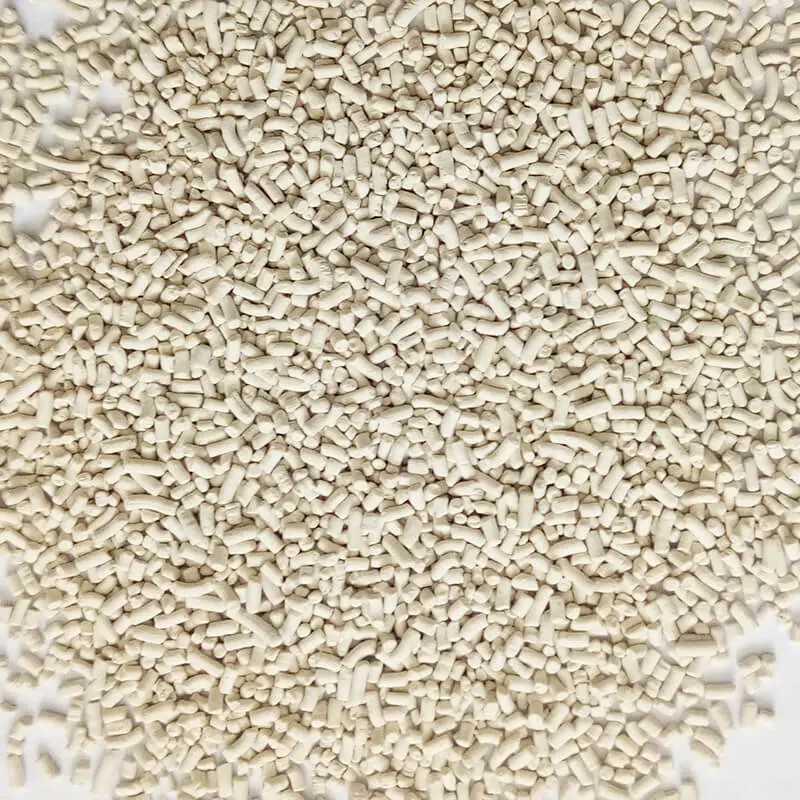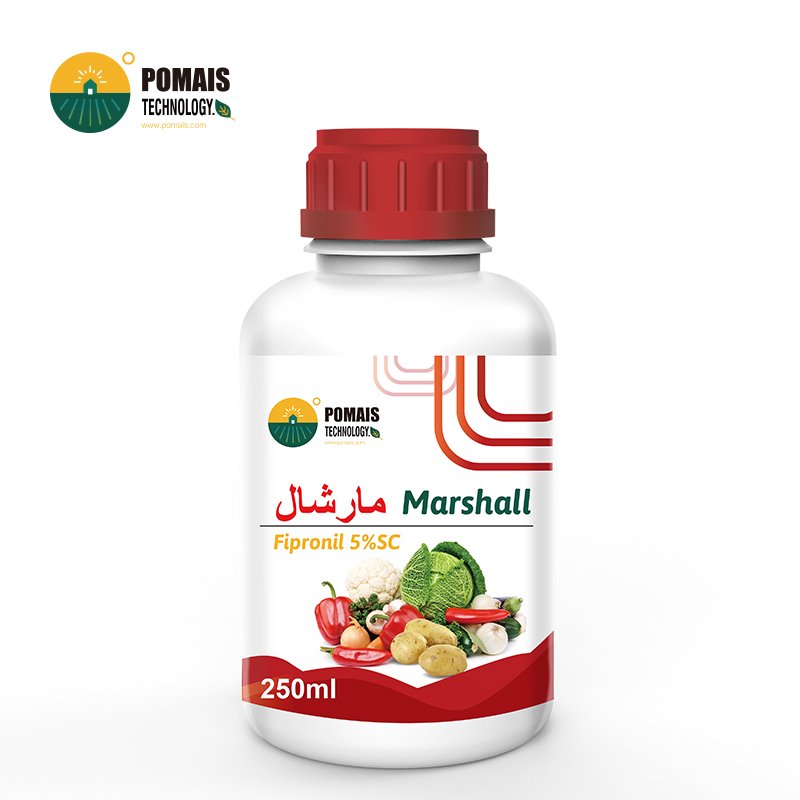Thiamethoxam vs. Fipronil insecticide
Thiamethoxam and Fipronil are two commonly used insecticides that differ in their properties, mechanisms of action and areas of application. An in-depth understanding of the differences between these two insecticides can help farmers, pest controllers and agricultural experts make more informed choices in specific situations. The following is a detailed description of the characteristics of these two insecticides, highlighting their unique features and a comparative analysis.
Thiamethoxam Insecticide
Thiamethoxam is a systemic, broad-spectrum insecticide belonging to the neonicotinoid chemical class. It is highly effective against sucking and chewing pests in agricultural, horticultural, and forestry applications.
Highlights
- Systemic Action: Absorbed by plants and translocated throughout their tissues.
- Broad-Spectrum Efficacy: Targets pests such as aphids, whiteflies, thrips, and rootworms.
- Long-Lasting Protection: Provides extended residual control.
- Low Dosage: Effective at low application rates, reducing environmental impact.
Application Scenarios
- Crops: Vegetables, cereals, oilseeds, fruit trees, and turfgrass.
- Pests: Aphids, thrips, leafhoppers, flea beetles, and whiteflies.
- Methods: Foliar sprays, seed treatments, and soil applications.
Mode of Action
Thiamethoxam acts as a nicotinic acetylcholine receptor agonist, disrupting nerve impulses in insects, leading to paralysis and death.
Fipronil Insecticide
Fipronil is a contact and ingestion insecticide from the phenylpyrazole chemical class. It is renowned for its non-systemic activity and is widely used in agriculture, pest control, and veterinary medicine.
Highlights
- Non-Systemic: Works through direct contact or ingestion.
- Broad Applicability: Controls a wide range of soil-dwelling, chewing, and stinging pests.
- Fast Knockdown Effect: Provides rapid control of pests.
- Versatility: Used in agriculture, termite control, and flea treatment for pets.
Application Scenarios
- Crops: Rice, sugarcane, vegetables, and turf.
- Pests: Termites, rootworms, ants, and caterpillars.
- Methods: Foliar application, soil treatment, and bait formulations.
Mode of Action
Fipronil disrupts gamma-aminobutyric acid (GABA)-gated chloride channels, causing hyperexcitation of the insect nervous system, resulting in death.
Thiamethoxam vs. Fipronil
| Feature | Thiamethoxam | Fipronil |
|---|---|---|
| Chemical Class | Neonicotinoid | Phenylpyrazole |
| Systemic Activity | Yes | No |
| Target Pests | Sucking and chewing pests | Soil-dwelling and stinging pests |
| Primary Crops | Vegetables, fruits, cereals | Rice, sugarcane, turf |
| Application Methods | Foliar spray, soil treatment, seeds | Soil treatment, foliar spray, baits |
| Harm to Pollinators | Higher potential | Lower potential |
| Mode of Action | Nicotinic acetylcholine receptor | GABA-gated chloride channel |
| Residual Effect | Long-lasting | Moderate to long-lasting |
| Knockdown Speed | Moderate | Rapid |
1. Mode of Action
- Thiamethoxam works by disrupting the nervous system at the nicotinic acetylcholine receptors, making it particularly effective for systemic protection.
- Fipronil, on the other hand, targets the GABA-gated chloride channels, providing both contact and ingestion activity.
2. Target Pests
- Thiamethoxam is most effective against sucking pests like aphids, whiteflies, and thrips, as well as certain soil-dwelling pests when applied as a seed treatment.
- Fipronil excels in controlling soil-dwelling pests such as termites and rootworms and is also highly effective against stinging pests like ants and caterpillars.
3. Application and Usage
- Thiamethoxam is absorbed into the plant’s vascular system, offering systemic protection. It is often used as a seed treatment to protect crops from early pest attacks.
- Fipronil is non-systemic and provides rapid pest knockdown through direct contact or ingestion, making it suitable for soil treatment and bait formulations.
4. Environmental Impact
- Thiamethoxam is classified as a neonicotinoid and is associated with risks to pollinators, especially bees, requiring careful management around flowering crops.
- Fipronil poses less risk to pollinators but must be used cautiously to prevent contamination of water sources.
5. Longevity and Residual Effects
- Thiamethoxam provides longer-lasting residual control, reducing the need for frequent applications.
- Fipronil, while offering fast knockdown, may require additional treatments for sustained control.
Conclusion
Thiamethoxam and fipronil are both effective insecticides for agricultural pests, but their applications vary depending on the type of crop, target pest and environmental factors.
- Choose thiamethoxam for systemic, broad-spectrum control of sucking and chewing pests in vegetables, cereals, and fruits.
- Opt for fipronil for rapid knockdown of soil-dwelling pests, stinging insects, and applications requiring bait formulations.
Thiamethoxam and Fipronil are two commonly used insecticides that differ in their properties, mechanisms of action and areas of application. An in-depth understanding of the differences between these two insecticides can help farmers, pest controllers and agricultural experts make more informed choices in specific situations. The following is a detailed description of the characteristics of these two insecticides, highlighting their unique features and a comparative analysis.
Thiamethoxam Insecticide
Thiamethoxam is a systemic, broad-spectrum insecticide belonging to the neonicotinoid chemical class. It is highly effective against sucking and chewing pests in agricultural, horticultural, and forestry applications.
Highlights
- Systemic Action: Absorbed by plants and translocated throughout their tissues.
- Broad-Spectrum Efficacy: Targets pests such as aphids, whiteflies, thrips, and rootworms.
- Long-Lasting Protection: Provides extended residual control.
- Low Dosage: Effective at low application rates, reducing environmental impact.
Application Scenarios
- Crops: Vegetables, cereals, oilseeds, fruit trees, and turfgrass.
- Pests: Aphids, thrips, leafhoppers, flea beetles, and whiteflies.
- Methods: Foliar sprays, seed treatments, and soil applications.
Mode of Action
Thiamethoxam acts as a nicotinic acetylcholine receptor agonist, disrupting nerve impulses in insects, leading to paralysis and death.
Fipronil Insecticide
Fipronil is a contact and ingestion insecticide from the phenylpyrazole chemical class. It is renowned for its non-systemic activity and is widely used in agriculture, pest control, and veterinary medicine.
Highlights
- Non-Systemic: Works through direct contact or ingestion.
- Broad Applicability: Controls a wide range of soil-dwelling, chewing, and stinging pests.
- Fast Knockdown Effect: Provides rapid control of pests.
- Versatility: Used in agriculture, termite control, and flea treatment for pets.
Application Scenarios
- Crops: Rice, sugarcane, vegetables, and turf.
- Pests: Termites, rootworms, ants, and caterpillars.
- Methods: Foliar application, soil treatment, and bait formulations.
Mode of Action
Fipronil disrupts gamma-aminobutyric acid (GABA)-gated chloride channels, causing hyperexcitation of the insect nervous system, resulting in death.
Thiamethoxam vs. Fipronil
| Feature | Thiamethoxam | Fipronil |
|---|---|---|
| Chemical Class | Neonicotinoid | Phenylpyrazole |
| Systemic Activity | Yes | No |
| Target Pests | Sucking and chewing pests | Soil-dwelling and stinging pests |
| Primary Crops | Vegetables, fruits, cereals | Rice, sugarcane, turf |
| Application Methods | Foliar spray, soil treatment, seeds | Soil treatment, foliar spray, baits |
| Harm to Pollinators | Higher potential | Lower potential |
| Mode of Action | Nicotinic acetylcholine receptor | GABA-gated chloride channel |
| Residual Effect | Long-lasting | Moderate to long-lasting |
| Knockdown Speed | Moderate | Rapid |
1. Mode of Action
- Thiamethoxam works by disrupting the nervous system at the nicotinic acetylcholine receptors, making it particularly effective for systemic protection.
- Fipronil, on the other hand, targets the GABA-gated chloride channels, providing both contact and ingestion activity.
2. Target Pests
- Thiamethoxam is most effective against sucking pests like aphids, whiteflies, and thrips, as well as certain soil-dwelling pests when applied as a seed treatment.
- Fipronil excels in controlling soil-dwelling pests such as termites and rootworms and is also highly effective against stinging pests like ants and caterpillars.
3. Application and Usage
- Thiamethoxam is absorbed into the plant’s vascular system, offering systemic protection. It is often used as a seed treatment to protect crops from early pest attacks.
- Fipronil is non-systemic and provides rapid pest knockdown through direct contact or ingestion, making it suitable for soil treatment and bait formulations.
4. Environmental Impact
- Thiamethoxam is classified as a neonicotinoid and is associated with risks to pollinators, especially bees, requiring careful management around flowering crops.
- Fipronil poses less risk to pollinators but must be used cautiously to prevent contamination of water sources.
5. Longevity and Residual Effects
- Thiamethoxam provides longer-lasting residual control, reducing the need for frequent applications.
- Fipronil, while offering fast knockdown, may require additional treatments for sustained control.
Conclusion
Thiamethoxam and fipronil are both effective insecticides for agricultural pests, but their applications vary depending on the type of crop, target pest and environmental factors.
- Choose thiamethoxam for systemic, broad-spectrum control of sucking and chewing pests in vegetables, cereals, and fruits.
- Opt for fipronil for rapid knockdown of soil-dwelling pests, stinging insects, and applications requiring bait formulations.







